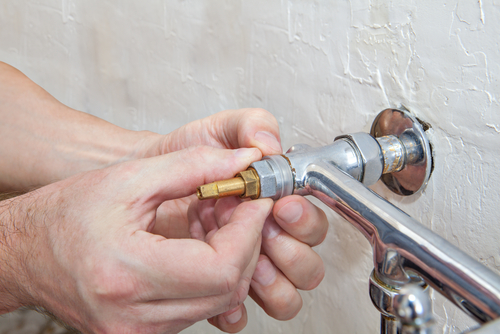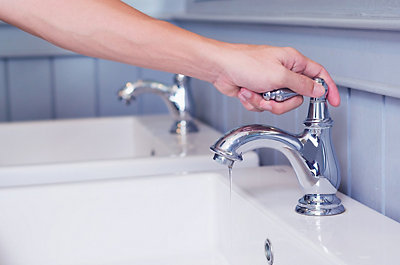Reasons Why It's Critical to Resolve a Broken Faucet
Reasons Why It's Critical to Resolve a Broken Faucet
Blog Article
The article which follows relating to Why Are My Faucets Dripping (And Can I Fix It Myself)? is unquestionably compelling. Have a go and make your own personal results.

Trickling faucets may appear like a small aggravation, but their effect surpasses simply the inconvenience of the noise. From drainage to incurring unnecessary monetary expenses and wellness risks, disregarding a leaking tap can cause different effects. In this write-up, we'll look into why it's crucial to address this common household issue quickly and efficiently.
Wastage of Water
Environmental Effect
Leaking faucets contribute significantly to water wastefulness. According to the Epa (EPA), a solitary faucet dripping at one drip per secondly can lose more than 3,000 gallons of water per year. This not just stress water sources however also influences ecological communities and wildlife dependent on them.
Financial Prices
Enhanced Water Bills
Past the environmental influence, dripping taps can inflate water costs considerably. The built up wastefulness in time converts into greater utility costs, which can have been avoided with prompt repairs.
Prospective Building Damage
Additionally, prolonged dripping can cause harm to fixtures and surfaces surrounding the faucet. Water build-up can create discoloration, corrosion, and even structural problems if left ignored, leading to additional repair work costs.
Health and wellness Worries
Mold And Mildew and Mildew Growth
The constant existence of dampness from a trickling tap creates an ideal environment for mold and mold development. These fungis not only endanger indoor air quality but also present health and wellness dangers, especially for people with respiratory conditions or allergic reactions.
Waterborne Illness
Stationary water in leaking taps can come to be a breeding place for germs and other pathogens, boosting the threat of waterborne diseases. Pollutants such as Legionella bacteria grow in stationary water, potentially leading to significant health problems when ingested or breathed in.
Do it yourself vs. Professional Fixing
Advantages and disadvantages of DIY Repair
While some may try to fix a dripping faucet themselves, DIY fixings come with their own collection of obstacles. Without appropriate understanding and tools, do it yourself attempts can worsen the issue or cause incomplete repair services, prolonging the issue.
Advantages of Hiring a Specialist Plumber
Employing a professional plumber guarantees that the underlying source of the dripping tap is attended to properly. Plumbing professionals have the know-how and tools to diagnose and repair tap issues effectively, saving time and reducing the threat of more damage.
Step-by-Step Overview to Repairing a Dripping Faucet
Devices Required
Prior to trying to take care of a leaking faucet, gather the essential devices, including a flexible wrench, screwdrivers, replacement components (such as washing machines or cartridges), and plumber's tape.
Usual Faucet Issues and Their Solutions
Determine the type of tap and the details problem causing the drip. Common problems consist of worn-out washing machines, corroded shutoff seats, or defective O-rings. Describe maker instructions or on-line tutorials for step-by-step advice on fixings.
Preventive Measures
Routine Maintenance Tips
To stop leaking taps, perform routine upkeep such as cleansing aerators, examining for leaks, and changing damaged parts immediately. Additionally, take into consideration setting up water-saving devices or updating to extra effective components.
Significance of Prompt Services
Dealing with trickling taps as quickly as they're noticed prevents additional water wastage and prospective damages, inevitably conserving both water and cash in the long run.
Impact on Building Value
Assumption of Well-Maintained Property
Maintaining a residential property in good condition, including attending to maintenance issues like trickling taps, improves its perceived worth and value among prospective customers or lessees.
Influence on Resale Worth
Residences with well-kept plumbing components, including faucets, command greater resale worths in the realty market. Addressing leaking taps can contribute to a favorable impact throughout residential property inspections and arrangements.
Environmental Responsibility
Private Payment to Conservation
Taking responsibility for fixing leaking taps lines up with more comprehensive initiatives towards water conservation and environmental sustainability. Every person's actions collectively make a considerable effect on maintaining precious resources.
Lasting Living Practices
By focusing on punctual repair work and taking on water-saving practices, individuals add to lasting living techniques that profit both existing and future generations.
Conclusion
Attending to a dripping faucet exceeds plain convenience; it's a necessary step toward preserving water, reducing monetary expenses, and guarding health and residential property. Whether via do it yourself repair work or specialist help, taking action to deal with trickling taps is a tiny yet impactful way to promote accountable stewardship of resources and add to a healthier, more sustainable future.
How to Fix a Dripping or Leaky Faucet
A leaking faucet is one of the most common problems that homeowners encounter, but it being commonplace doesn’t make it any less annoying. The constant drip drip drip of a leaking bathtub faucet, showerhead, or sink tap can disturb your home’s serenity. Left neglected, a dripping faucet can also result in higher water bills and discoloration or mold growth in your sink or plumbing fixtures.
Fortunately, you don’t have to be a trained plumber to know how to stop a dripping faucet. With some basic tools, replacement parts, and a little patience, leaky faucet repair is a breeze. In this article, we’ll explain what causes dripping faucets and how you can fix them.
What Causes a Leaking Faucet?
Kitchen and bathroom faucets come in all manner of designs, but most involve some combination of valves, O-rings, seals, and washers. The O-ring is usually the weakest link, but any one of these pieces can wear down over time. Heat, moisture, temperature fluctuations, minerals, mold, and movement can contribute to warping and corrosion, breaking the watertight seal. This just comes with the territory of being a homeowner. Everything is always subject to wear and tear, and some component parts of your appliances and fixtures need to be replaced on occasion. At least replacement O-rings are cheap!
More rarely, dripping faucets can be a symptom of excessively high water pressure. Were this the case in your home, you would probably notice that the leak is not isolated to one faucet. Water pressure issues are harder to resolve on your own. We recommend contacting a professional plumber if you suspect your water pressure is too high.
How to Fix a Dripping Faucet
Pipe wrench or monkey wrench Allen wrench set Screwdrivers Old towel or rag Shut off the water.
Before you do anything, you need to turn off the water to keep from drenching your kitchen or bathroom. You should find a valve under the sink and against the wall. Once you’ve turned this valve, try turning the faucet on to confirm that the water source has been cut off.
If you can’t locate your local valve for the faucet you’re working on, you can always shut off the water to the house at the main valve. Of course, this will prohibit anyone from using the sinks, showers, or toilets while you’re working on the faucet that’s giving you trouble.
Plug or block the drain.
You’ll be disassembling the faucet and removing some small bits of hardware. Plug the drain with a stopper or rag to avoid the possibility of a small screw falling into your P-trap.
Take apart the faucet assembly.
There are several varieties of kitchen and bathroom faucets, each with its own manner of assembly. For detailed instructions on how to disassemble your faucet, you can refer to the fixture’s manual or contact the manufacturer. If you know whether you have a ball, disc, cartridge, or compression faucet, you can find detailed schematics online.
In general, you need to begin by removing the faucet handles. You might notice a small screw that you’ll need to remove with a screwdriver or Allen wrench. If you don’t see any visible securing hardware, it’s likely hidden under a decorative cap that can be unscrewed or popped off with flathead screwdriver.
Remove each piece methodically, consulting a schematic when necessary. Take notes or arrange the pieces in such a way to make it easier to correctly reassemble the faucet later.
Remove the cartridge.
Once you’ve removed the handles and securing hardware, you should be able to remove the valve cartridge or stem. Some cartridges will slide right out. Other faucet models will require you to loosen a nut with a pipe wrench before you can remove the valve stem.
Examine the exposed hardware.
With the cartridge or stem removed, inspect the component parts. Check the rubber O-rings for wear and tear. Also examine the seat washer for corrosion or other damage. These pieces are usually the responsible parties for a dripping faucet, but it’s worth inspecting the other component parts while you have the faucet disassembled.
Find replacement parts.
Once you’ve identified which faucet component has failed, find an identical replacement. Your local hardware store should have O-rings, seat washers, and other standard components in stock. If you have a luxury or uncommon faucet, you may have to contact the manufacturer for a replacement part.
It’s a good idea to take your old parts with you to the hardware store so you can compare them with the store’s inventory and be sure you’re purchasing the correct replacement.
Reassemble the faucet.
With your new parts in hand, reconstruct the faucet and handles. Don’t be tempted to overtighten screws or nuts. You might think this could create a better seal, but it can instead damage or bend a delicate part of the assembly and create a new problem for you.
Turn on the water and test the faucet.
The only thing left to do is test your work. Unplug the sink, turn the water back on, and try the faucet. Congratulate yourself on a job well done!
https://www.libertyhomeguard.com/how-to-fix-a-dripping-or-leaky-faucet/

I found that piece of writing on 4 Common Reasons for a Leaky Faucet while browsing the search engines. Sharing is nice. One never knows, you may just be helping someone out. We thank you for your readership.
Report this page